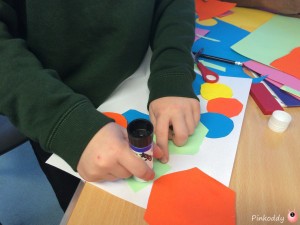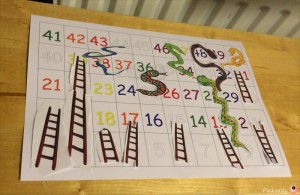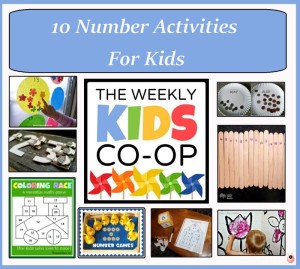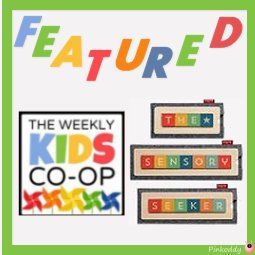One of the ways of helping bring Maths to life is by making your very own Skeleton. This exercise was beneficial to The Sensory Seeker because it was a very concrete activity. By that I mean he had a visual way of processing the information – as opposed to an abstract idea in his head.
Real Life Measuring
 First we measured different things – our hands, a chair, the table. We measured them using our hands. We compared how different sized hands (mine Vs the children’s) needed a different number of them for the measurement of the different objects. We then moved onto tape measures (soft and hard), rulers etc and talked about cms and inches.
First we measured different things – our hands, a chair, the table. We measured them using our hands. We compared how different sized hands (mine Vs the children’s) needed a different number of them for the measurement of the different objects. We then moved onto tape measures (soft and hard), rulers etc and talked about cms and inches.
This was a fun way to introduce measuring and was much better at holding The Sensory Seeker’s Interest.
Measuring Yourself to Make a Life-Sized Skeleton
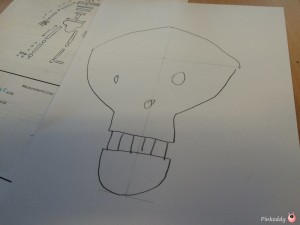
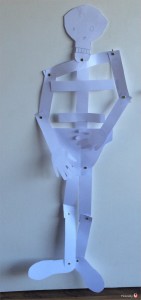 The following week we made a life sized skeleton. We did this by taking different measurements on the body and then drew the same size for each part on a piece of paper. We then cut it out and attached it together. It was good to demonstrate how something the size of The Sensory Seeker could be put together from the smaller parts. It also gave him a better understanding of his bone structure – as well as things like fine motor practice (drawing and cutting), number sequencing, attention, instructions etc. We used blue tac and a biro to make holes for the split pins.
The following week we made a life sized skeleton. We did this by taking different measurements on the body and then drew the same size for each part on a piece of paper. We then cut it out and attached it together. It was good to demonstrate how something the size of The Sensory Seeker could be put together from the smaller parts. It also gave him a better understanding of his bone structure – as well as things like fine motor practice (drawing and cutting), number sequencing, attention, instructions etc. We used blue tac and a biro to make holes for the split pins.
I think it was also good for self-esteem as now we have a bony version of The Sensory Seeker proudly hanging on the back of our kitchen door. It also fits in very nicely with our Pirate theme – which really began when we spent the night in a Pirate room at Legoland Windsor.
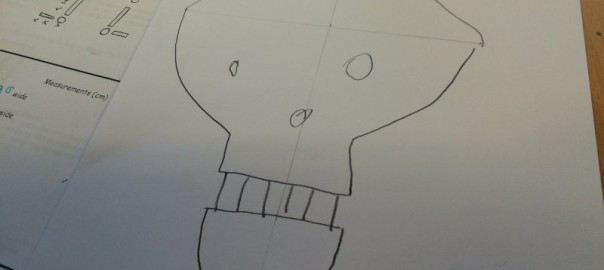
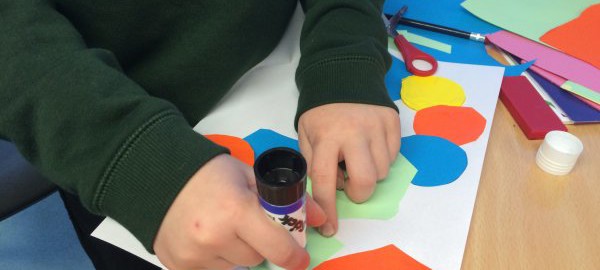
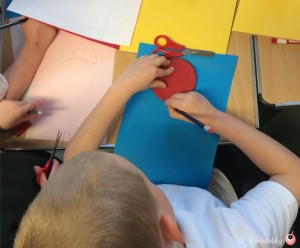 This week we learnt about Shapes as part of our Maths family lesson. But it was also combined with numbers. We were explained what the different things that each year group were expected to know and I have to say there’s a massive jump between Reception and Year 1. Again the activity was able to be adapted to suit different ability levels.
This week we learnt about Shapes as part of our Maths family lesson. But it was also combined with numbers. We were explained what the different things that each year group were expected to know and I have to say there’s a massive jump between Reception and Year 1. Again the activity was able to be adapted to suit different ability levels. This week we made a Maths Monster. Well that’s what I called it anyway (I am sure it wasn’t quite as fierce when the tutor said it – maybe a number worm or something). The children had a number of shapes to pick from. At this point you could make sure they know the names of the different shapes, or talk about the different properties – how many sides, angles, and even go as far as talking about perimeters and circumferences (but not with children as young as primary I expect).
This week we made a Maths Monster. Well that’s what I called it anyway (I am sure it wasn’t quite as fierce when the tutor said it – maybe a number worm or something). The children had a number of shapes to pick from. At this point you could make sure they know the names of the different shapes, or talk about the different properties – how many sides, angles, and even go as far as talking about perimeters and circumferences (but not with children as young as primary I expect).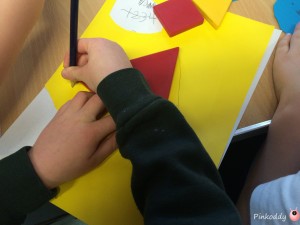 Next the children were given lots of coloured paper from them to chose from and draw around their shape. Great for pencil control, hand-eye co-ordination. I like how they have so much choice (shape and colour) as this is good for independence and self-esteem. Next some fine-motor development as they cut and stick their shapes. This could either be to each other or on another piece of paper. Arranging the shapes into a monster or worm. Again this is great for placement, creativity etc.
Next the children were given lots of coloured paper from them to chose from and draw around their shape. Great for pencil control, hand-eye co-ordination. I like how they have so much choice (shape and colour) as this is good for independence and self-esteem. Next some fine-motor development as they cut and stick their shapes. This could either be to each other or on another piece of paper. Arranging the shapes into a monster or worm. Again this is great for placement, creativity etc. The Sensory Seeker needed help with drawing around the shapes more than his older brother. The older brother needed just reminding to hold the shape still with one hand. The Sensory Seeker is crossing his arms across and not quite figured how to just go all the way around.
The Sensory Seeker needed help with drawing around the shapes more than his older brother. The older brother needed just reminding to hold the shape still with one hand. The Sensory Seeker is crossing his arms across and not quite figured how to just go all the way around.